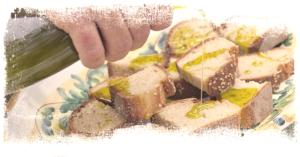Olives are the fruit of the olive tree and as we know, can both be consumed as table olives and used to produce oil. Olives just picked from the tree are practically inedible because they are too bitter. To resolve this problem, they undergo processing in two phases: the first is called debittering and the second transformation.
First phase
Debittering is the first step for making olives edible. Traditionally, the process involves immersing the olives in a solution of water and salt; they are then left to rest for between 3 and 10 days to allow the solution – which should be changed regularly during the process – to remove the bitterness in excess. Herbs such as fennel, thyme or rosemary – the essential oils of which help with their subsequent storage – can be added to this solution.

Second phase
After debittering, the olives must be transformed, and there are four methods for doing this. Using the first method, the olives are treated with a particular solution and then preserved in brine, in which they undergo complete or partial fermentation. The second method is similar to the first, with the difference that the olives are not previously treated but only immersed in brine. The third is called oxidation : green or iridescent olives are first passed in brine and then transferred into an alkaline solution to be oxidised. With the fourth method, called dehydration, the olives lose a part of their water content and are placed under salt or treated with heat.
At this point, the olives are ready to be eaten. Enjoy them!






Leave A Comment